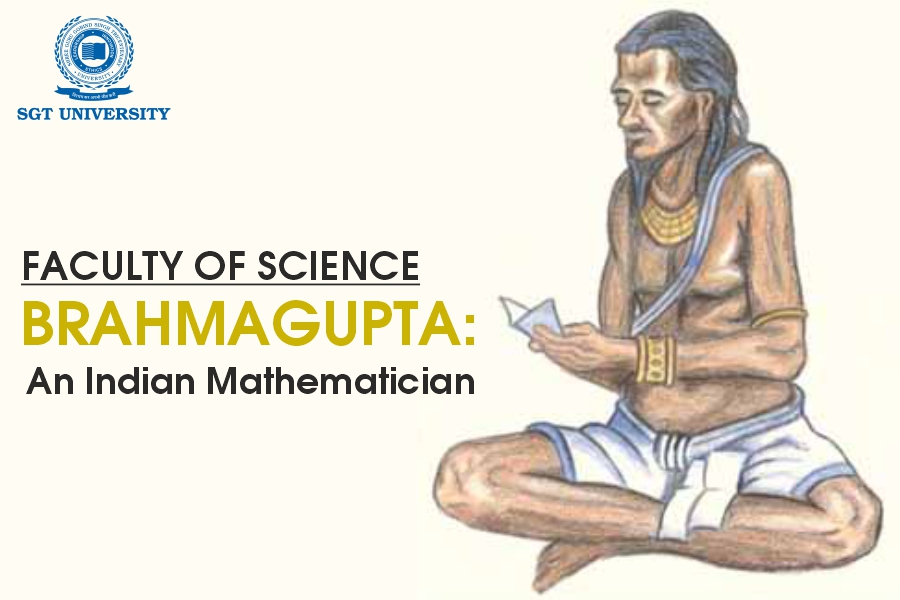Brahmagupta was born in Bhinmal, Rajasthan in Northeast India, in 597 and died in 668 at 71. His father was an astrologer, and he was born into a mathematical family. Brahmagupta, like his father, considered himself an astrologer rather than a mathematician.
He put greater faith in his religion to guide him through his discoveries. Many of his mathematical proofs and claims are written in a poetic style, yet they are not counted as proofs and claims.
Brahmagupta grew up to become the director of an astronomical observatory in Ujjain, India. He went on to write four novels about astronomy and mathematics after that.
Brahmagupta’s mathematical works:
Astronomy, gravity theory, negative numbers, zero, quadratic equations, and square roots were among his works. Most Brahmagupta’s material comes from old sources like the Brahmasputasiddhanta, which has twenty-five chapters.
Brahmasputasiddhanta means “the system of the god of creation and astronomy.” Brahmagupta wrote items common to the mathematical and astronomical developments of the time in the first ten chapters of the book.
The themes included:
- Mean planet longitudes.
- True planet longitudes.
- Diurnal rotation.
- Lunar eclipses.
- Solar eclipses.
- Rising and setting of the sun/moon.
- Phases of the moon.
- Planet conjunctions with stars and other planets.
The second half of the book contains significant world knowledge. It contains algebra, calendar observations and calculations, metres, spheres, and instruments.
His other works include the Cadamekela, Khandakhadyaka, and Durkeamynarda, a collection of verse-only compositions with no proofs.
Also Read: What are Ionic Liquids?
His definition and usage of zero with negative integers is his most renowned and well-known contribution to mathematics. Mathematicians could not have discovered, written, or grasped the facts of the universe without Brahmagupta’s concept of zero.
Also Read: A Historical Note on Mathematics
He did come up with a set of laws for zero, which are as follows:
- A debt is a debt minus zero.
- A fortune is a fortune minus zero.
- A zero is a zero minus zero.
- A debt that is reduced to zero is a fortune.
- A debt is a fortune less than zero.
- When a debt or fortune is multiplied by zero, the result is zero.
- The result of multiplying zero by zero is zero.
- One fortune is the product or quotient of two fortunes.
- One fortune is the product or quotient of two debts.
- A debt is the product or quotient of a debt and a fortune.
- A debt is the product or quotient of a fortune and a debt.
The rules for zero that we use now are based on these simplified rules in other terminology. To put it another way, Brahmagupta’s zero rules are as follows:
- A positive number is the same as a positive number minus zero.
- A negative number is the same as a negative number minus zero.
- Zero less zero equals zero.
- When removed from zero, the value of a negative number is its inverse (a positive number).
- When subtracted from zero, the value of a positive number is its inverse (a negative number).
- A number multiplied by zero, whether positive or negative, equals zero.
- Zero times zero equals zero.
- A positive number is the product or quotient of two positive numbers.
- A positive number is formed by multiplying two negative numbers.
- A negative number is the product or quotient of a positive and negative number or vice versa.
Brahmagupta was captivated by arithmetic problems, and he provided formulas for calculating the sum of squares and cubes to the nth integer. His formulas for the area of a triangle and cyclic quadrilateral in terms of sides are another outstanding achievement.
The Faculty of Science, SGT University, is one of the best colleges for science courses in Delhi NCR. The faculty has five departments: Department of Physics, Department of Chemistry, Department of Mathematics, Department of Forensic Science, and Department of Environmental Science. The Faculty of Science offers 12 courses – 2 Undergraduate, 5 Post Graduate, and 5 PhDs.
Written By:-
Mr. Pankaj Kumar
Assistant Professor, Department of Mathematics
Faculty of Science
SGT University




